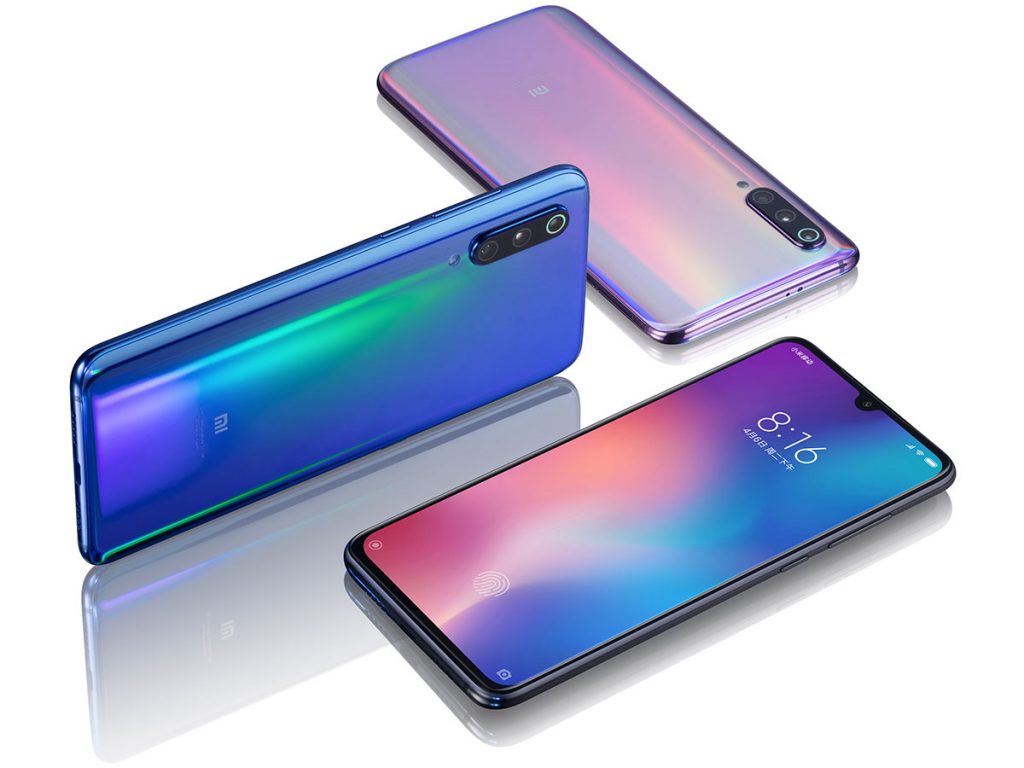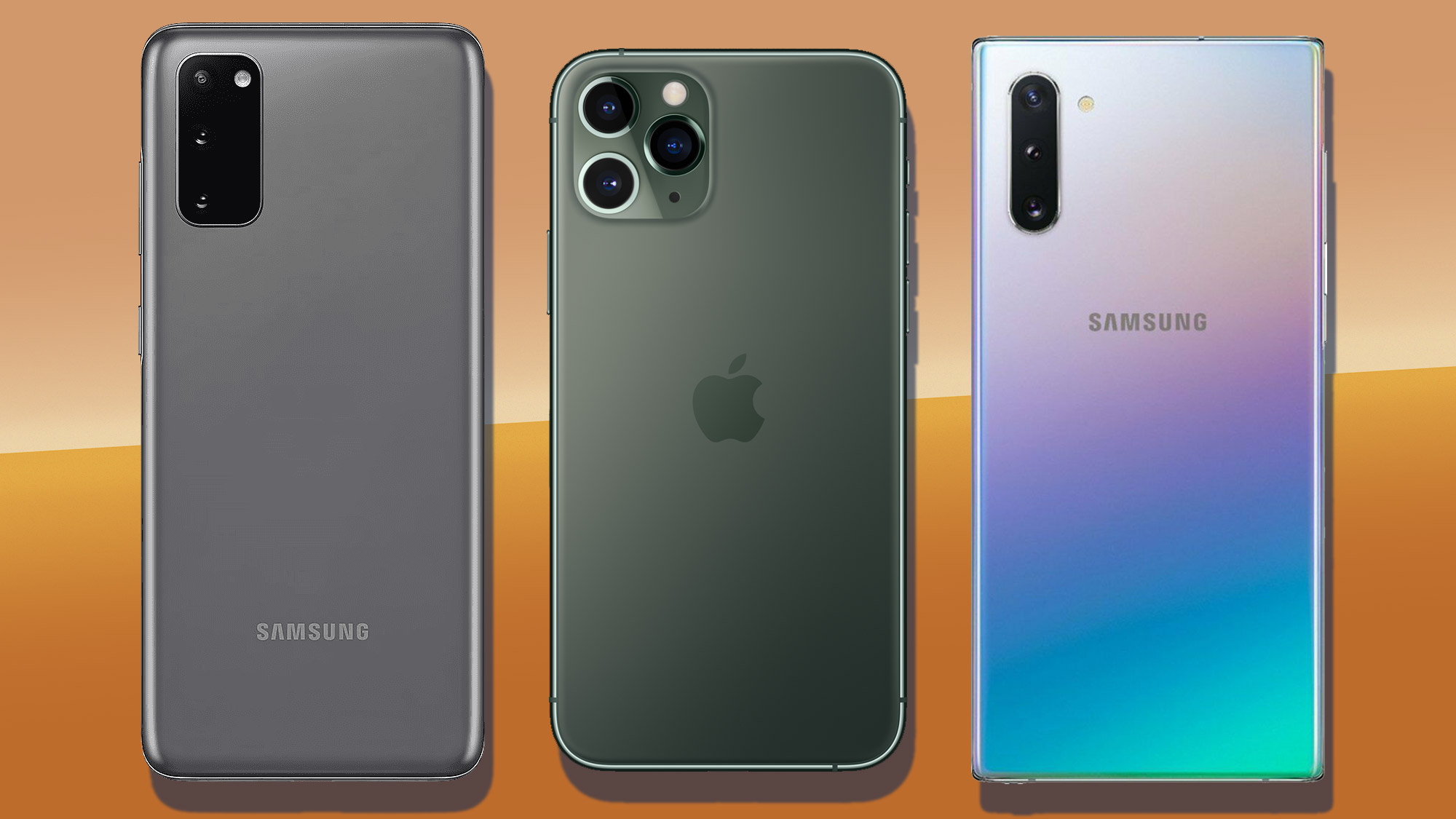If you’re on the hunt for an upgrade to your smartphone our list of best phones is your ideal starting point.
- Best camera: iPhone 11 Pro
- Best way to avoid a notch: OnePlus 7T Pro
- Best big phone: Samsung Galaxy Note 10 Plus
- Best iPhone: iPhone 11
- Best all-rounder: Samsung Galaxy S10 and Samsung Galaxy S10 Plus
- Best for clean software: Google Pixel 3a
- Best for Google: Google Pixel 4
- Best value flagship: Xiaomi Mi 9
- Best value OnePlus: OnePlus 7T
1. iPhone 11 Pro
The iPhone 11 Pro offers Apple’s best-ever image quality

price : $1499 buy here
Apple’s latest family of iPhones are now out, and the iPhone 11, iPhone 11 Pro and iPhone 11 Pro Max deliver significant upgrades over the iPhone X line, most notably on the camera and battery life fronts. There’s plenty more underneath the hood that makes these new devices worth the upgrade, though—especially when paired with the newly released operating system, iOS 13. We’re here to run down the good, great and somewhat silly additions that make the iPhone 11 mighty attractive.
Best camera phone 2020 :
Camera
- Dual 12MP Ultra Wide and Wide cameras
- Ultra Wide: ƒ/2.4 aperture and 120° field of view
- Wide: ƒ/1.8 aperture
- 2x optical zoom out; digital zoom up to 5x
- Portrait mode with advanced bokeh and Depth Control
- Portrait Lighting with six effects (Natural, Studio, Contour, Stage, Stage Mono, High-Key Mono)
- Optical image stabilization (Wide)
- Five‑element lens (Ultra Wide); six‑element lens (Wide)
- Brighter True Tone flash with Slow Sync
- Panorama (up to 63MP)
- Sapphire crystal lens cover
- 100% Focus Pixels (Wide)
- Night mode
- Auto Adjustments
- Next-generation Smart HDR for photos
- Wide color capture for photos and Live Photos
- Advanced red‑eye correction
- Auto image stabilization
- Burst mode
- Photo geotagging
- Image formats captured: HEIF and JPEG
2. OnePlus 7T Pro
The best way to avoid a notch

price : $650 Buy here
The OnePlus 7T Pro’s immersive edge-to-edge display boasts a 90 Hz refresh rate for unmatched smoothness and QHD+ resolution for exceptional clarity. Simply our most breathtaking display, ever.
Design
If you’ve used the OnePlus 7 Pro, you’ll be familiar with most of the design language here. It’s actually quite difficult to tell the 7T Pro apart from the 7 Pro, but that’s not an issue as that was a great-looking device.
The back of the phone has a matte finish, and there’s only one color available called Haze Blue that you can see pictured throughout this review.
The device itself is quite large in order to facilitate that big display, and that may make it difficult to hold for those with smaller hands. It’s a comfortable device to have in your hand, though, thanks to the rounded edges of the rear and the matte finish.
3. Samsung Galaxy Note 10 Plus
A fantastic big phone that’s easy to recommend thanks to a lovely screen, versatile cameras and very quick charging

price : $1100 buy here
Introducing next-level powerWith Galaxy Note10 and Note10+ we’ve designed a mobile experience that’s like a computer, a gaming console, a movie-tech camera, and an intelligent pen, all in one device.
About big display
Galaxy Note10 | Note10 5G6.3″ FHD+ Dynamic AMOLED Infinity-O Display (2280×1080)401 ppiHDR10+ certifiedGalaxy Note10+ | Note10+ 5G6.8″ Quad HD+ Dynamic AMOLED Infinity-O Display (3040×1440)498 ppiHDR10+ certified
- *The Dynamic AMOLED display on Galaxy Note10 and Note10+ received a certification from VDE Germany for 100 percent Mobile Color Volume in the DCI-P3 color range, which means your images aren’t washed out and you’ll get unbelievably vivid colors regardless of differing levels of brightness. The display can achieve peak brightness of up to 1200 nits, improving the contrast between dark and light aspects of digital content for a more brilliant picture quality, with a 2,000,000:1 contrast ratio to make your mobile experience more immersive.
- *TUV Rheinland, a globally recognized certification institute, awarded Galaxy Note10 and Note10+’s display the Eye Comfort Certification based on its ability to drastically reduce the harmful effects of blue light. This certification can be found on www.tuv.com with the ID 1419071436.
- *Infinity-O Display: a near bezel-less, full-frontal, edge-to-edge screen.
- *Measured diagonally, Galaxy Note10’s screen size is 6.3″ as a full rectangle and 6.2″ when accounting for the rounded corners; and Galaxy Note10+’s screen size is 6.8″ as a full rectangle and 6.7″ when accounting for the rounded corners; actual viewable area is less due to the rounded corners and camera hole.
- *Default resolution of Galaxy Note10+ is Full HD+, which can be changed to Quad HD+ in Settings.
Google Pixel 3a
The perfect antidote to the £1000 smartphone – and an answer to Google’s dwindling smartphone sales

price : $400
The Google Pixel 3a makes a strong case for tossing out the spec sheet. On paper, it looks like yet another boring budget smartphone, with a middling processor, single front and rear cameras, and a bare-minimum 1080p screen. But in your pocket, you might just mistake it for a premium phone.
Part of the reason why is because, well, it’s a Pixel. Specifically, it looks a lot like the notchless Pixel 3 and the rumored design for the Pixel 4, and of course, it runs the latest version of Android. But while the high-priced G-stamped phones always left something to be desired when it came to design, the $399 Pixel 3a looks like a budget phone but acts like a premium one. It’s almost like Google has been setting us up for this all along.
Best for clean software
Pixel 3a also ships with the latest version of Android 9 along with the latest iteration of the Pixel Launcher. Visually, it’s identical to the software you’ll find on the flagship Pixels and for many that’s a good thing. With these more affordable phones – especially if you want the highest-spec devices available – you’re often restricted to convoluted software from the likes of Oppo, Xiaomi and Huawei.
Google hasn’t removed many features, either. You’ll find Pixel stalwarts such as Call Screen (the US-only self-answering phone trick), unlimited storage for your snaps in Google Photos, and the same Digital Wellbeing dashboard.
Xiaomi Mi 9
Could this be 2020’s best value flagship?

While we don’t hear much about it in the US, Xiaomi is better known elsewhere in the world for its solid midrange phones for primarily Chinese and European markets. The Mi 9 (starting at 2,999 yuan, approximately $432) is its best offering yet, featuring flagship-level hardware and spectacular camera performance for hundreds of dollars less than much of its competition. That makes the Mi 9 a real value, and our Editors’ Choice for midrange phones in China.
Design, Display, and Audio
While the Xiaomi Mi 9 follows the current all-glass design trend, it still manages to stand out amongst the competition. It measures 6.20 by 2.94 by 0.30 inches (HWD) and comes in at 6.10 ounces, but seems much more svelte thanks to its curved design and excellent weight distribution. It comes in blue, lavender, or a black that is really a stunning gunmetal gray. The phone is quick to pick up fingerprints, but you’ll probably want to pick up a good case since it offers no official protection from drops or water.

